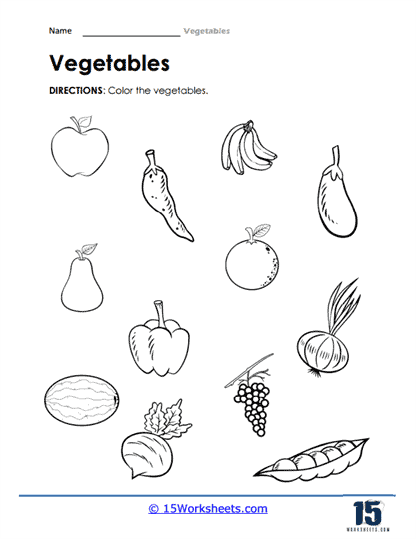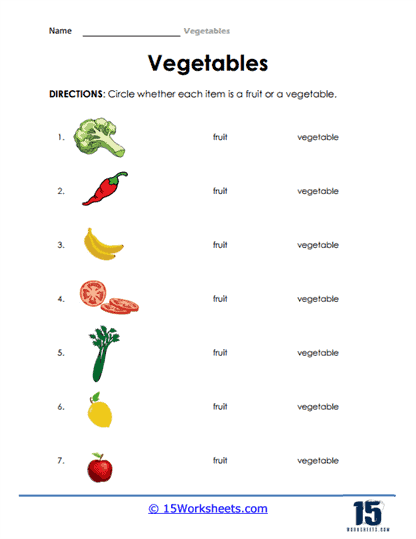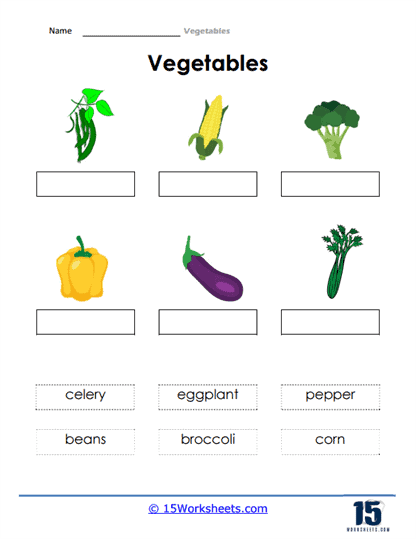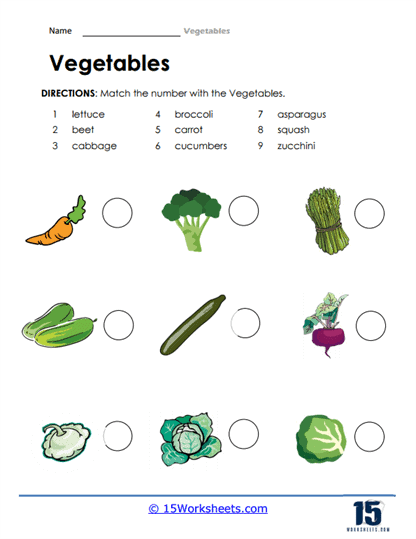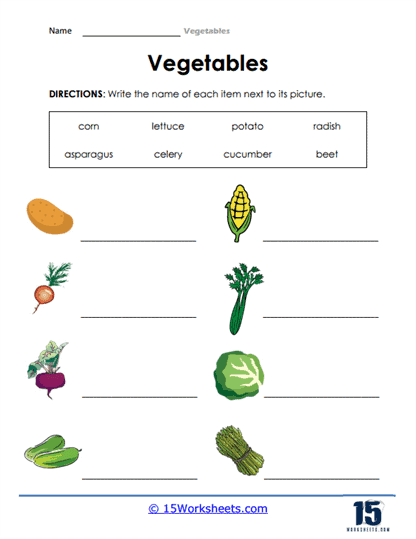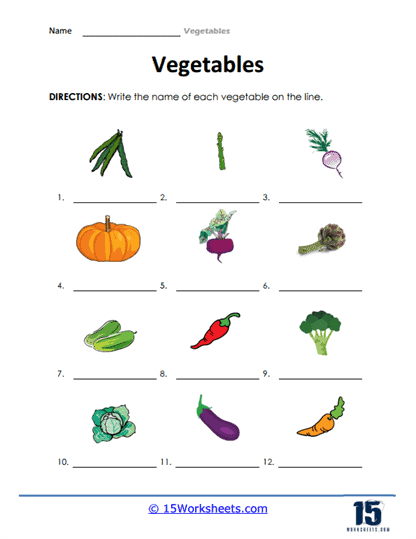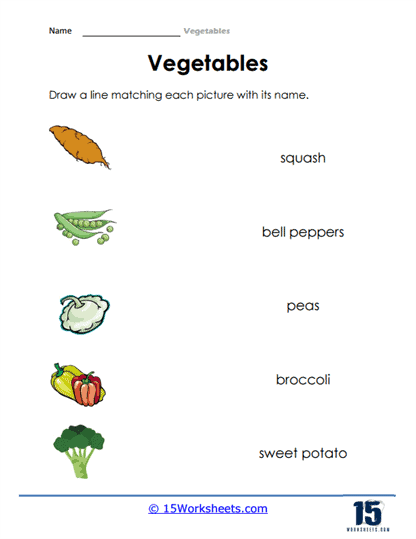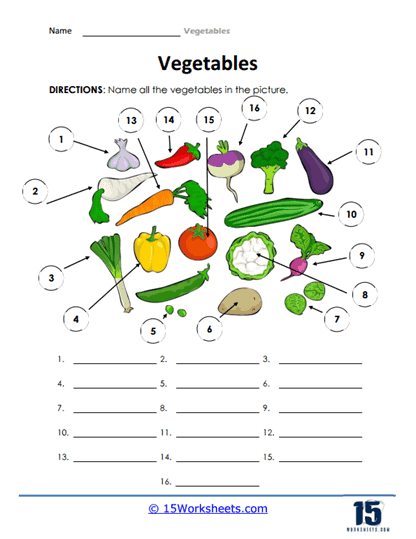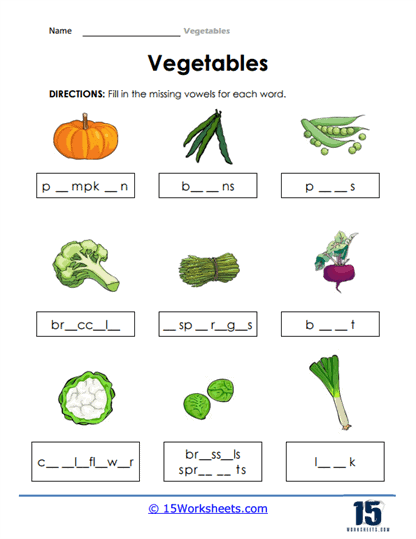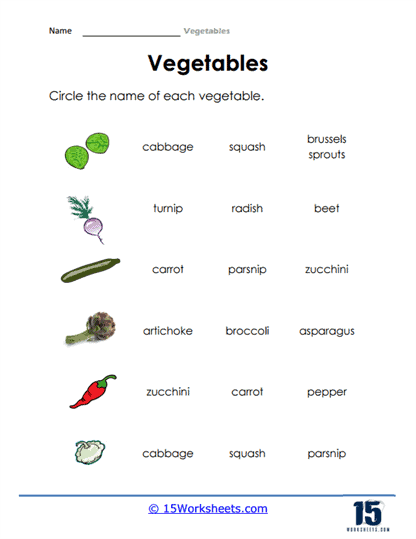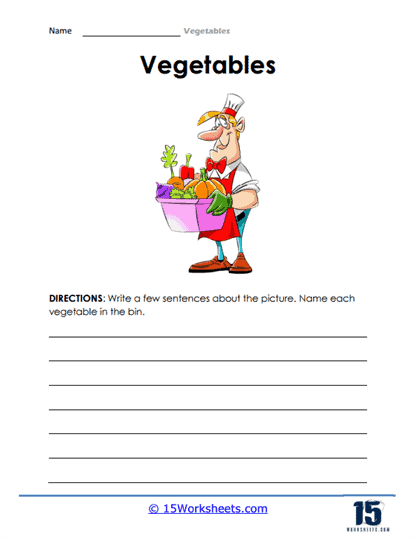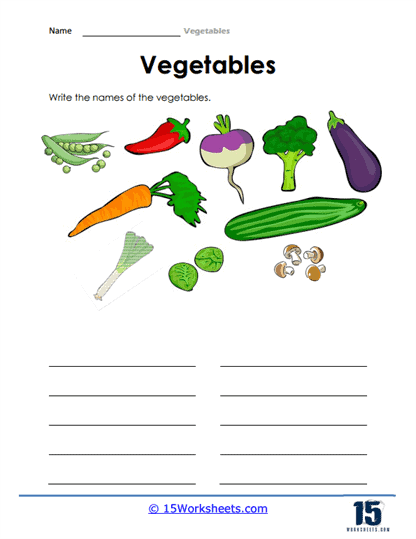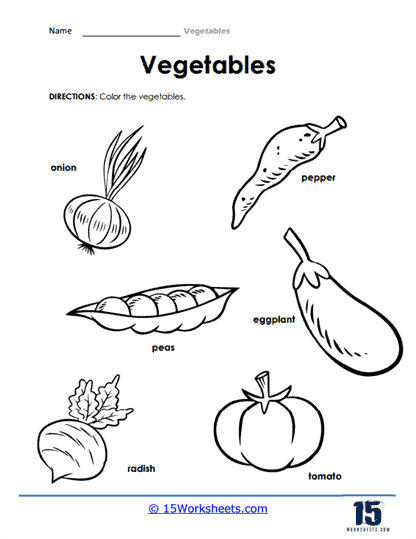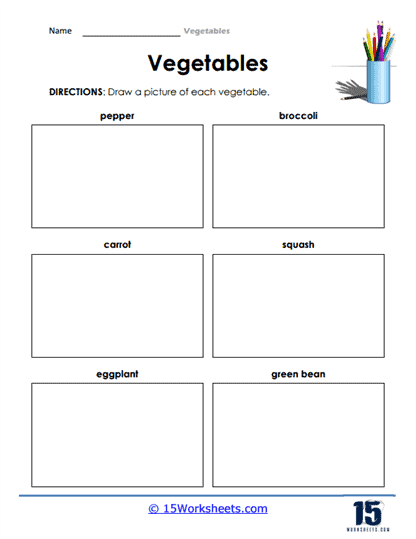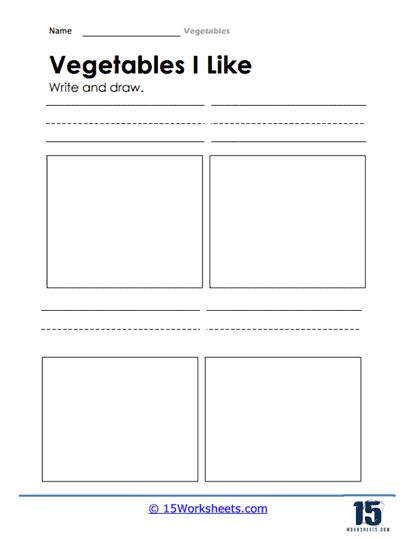Vegetables Worksheets
All About These 15 Worksheets
This series of 15 worksheets on vegetables offers an engaging and educational learning experience for students to expand their vocabulary, develop their knowledge of different vegetables, and explore the world of healthy eating.
Through a variety of activities and exercises, students will enhance their language skills, improve their understanding of plant-based foods, and develop critical thinking abilities related to nutrition and healthy lifestyles. The exercises also promote vocabulary acquisition, cultural awareness, and an appreciation for the diversity of vegetables. Through these worksheets, students will:
- Color in pictures of different vegetables;
- Distinguish fruits from vegetables by using pictures as visual clues;
- Match the vegetable names to their corresponding pictures;
- Fill in the missing vowels in different vegetable names;
- And draw pictures of a various kinds of vegetables.
This series of worksheets on vegetables provides students with a fun and educational opportunity to explore the world of plant-based foods, expand their vocabulary, and develop an understanding of the importance of vegetables in a healthy lifestyle. By engaging in activities that promote vocabulary acquisition, cultural awareness, and critical thinking related to nutrition, students develop a deeper appreciation for the diversity and nutritional benefits of vegetables.
Overall, these worksheets foster language skills, promote healthy eating habits, and empower students to make informed choices that contribute to their overall well-being.
What Are Vegetables?
Vegetables are edible plant parts that are commonly consumed as food. They are a key component of a healthy and balanced diet, providing essential vitamins, minerals, fiber, and other nutrients. Vegetables are typically low in calories and fat, making them an excellent source of nutrition for maintaining good health.
There is no strict scientific definition of vegetables, but they can be broadly classified into different categories based on their plant parts and nutritional characteristics. Some common types of vegetables include:
Leafy Greens
These vegetables have edible leaves and include kale, spinach, lettuce, collard greens, and Swiss chard. They are typically rich in vitamins A, C, and K, as well as iron, calcium, and other minerals.
Root Vegetables
These vegetables have edible roots or tubers and include carrots, beets, potatoes, sweet potatoes, and yams. They are typically rich in vitamins B and C, as well as fiber and carbohydrates.
Cruciferous Vegetables
These vegetables have edible flowers and include broccoli, cauliflower, cabbage, and Brussels sprouts. They are typically rich in vitamins C, E, and K, as well as fiber and antioxidants.
Allium Vegetables
These vegetables have edible bulbs and include onions, garlic, leeks, and shallots. They are typically rich in vitamins B and C, as well as antioxidants and sulfur-containing compounds.
Fruit Vegetables
These vegetables are technically fruits but are commonly consumed as vegetables due to their nutritional profile and culinary uses. Examples include tomatoes, cucumbers, peppers, eggplants, and squash. They are typically rich in vitamins A and C, as well as fiber and antioxidants.
Vegetables can be consumed in a variety of ways, including raw, cooked, grilled, roasted, or steamed. They can be used as ingredients in salads, soups, stews, casseroles, and other dishes, and can be seasoned with herbs, spices, or sauces to enhance their flavor. Eating a variety of vegetables as part of a balanced diet can help promote good health, reduce the risk of chronic diseases, and provide the body with essential nutrients for optimal functioning.

